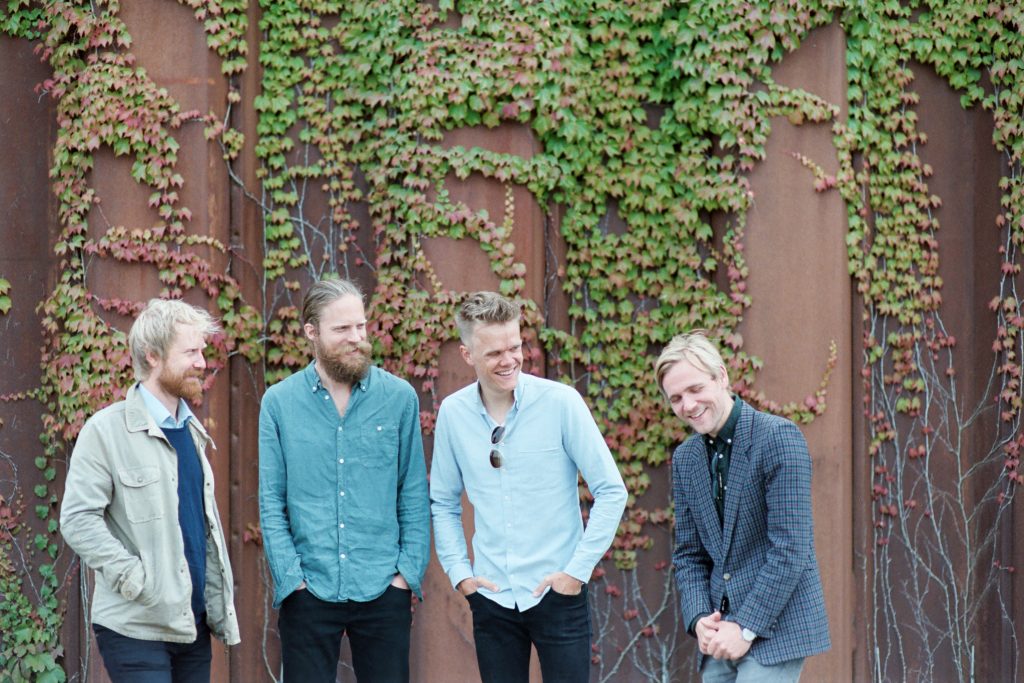
By Robert Croan
There’s no getting around it. Beethoven’s string quartets are tough stuff: monuments of Western music, worth the effort to unravel their joys and depths and mysteries, but really tough stuff. They’re tough on the ears, on the intellect and on the psyche.
Throughout his life, the iconic and complex composer sketched his musical thoughts first in his 32 piano sonatas, giving them their ultimate overt expression in his nine symphonies, but it was in his 16 string quartets that he distilled his ideas, something akin to assembling the intricate workings of a fine Swiss watch.
Prefacing the Danish String Quartet’s superb performance April 14 at the Broward Center, violist Asbjorn Nørgaard cannily encapsulated the three periods into which musicologists divide Beethoven’s output, giving the audience an inkling of what to expect. The program comprised one work from each period: the gentle but not quite conventional Op. 18, No. 3,
Beethoven’s first work in the genre (don’t go by the opus numbers, which were assigned by early publishers); the romantic Quartet No. 7 (Op. 59, No. 1), representing the start of his so-called middle period; and the thorny, dense Quartet No. 14 (Op. 131) – next-to-last in order of composition and the most abstract and inscrutable of all.
The Danish String Quartet – Nørgaard, along with violinists Frederik Øland and Rune Tonsgaard Sørensen, and cellist Fredrik Schøyen Sjolin – exuded energy and exuberance, which they launched with incisive rhythms and unanimity of intent, tempered by svelte tone and when called for, seamless legato. These qualities were in evidence in Op. 18, No. 3, though with less variety of tonal color than the ensemble would provide later on.
The opening movement was appropriately lyrical, its songful elements carrying over into a serene reading of the florid melodies in the following Andante. But even this sunny early opus has its craggy moments, such as the change of mood at the recapitulation of the opening theme, in the present reading perhaps a little too glossy and under-defined.
It was in the Presto finale that the performance came to life with a sense of communal fun at executing the kinetic gigue rhythms of the principal theme. Here, Beethoven was ahead of his time in giving more importance to the closing movement, and the players conveyed well the underlying ferment amid the merriment.
Quartet No. 7, the first of the three “Razumovsky” quartets dedicated to the Russian Count and ambassador to Vienna who commissioned them, is a chamber music counterpart to the Eroica Symphony: dramatic yet comforting, in the style most familiarly associated with this composer. Norwegian cellist Sjolin (the only non-Danish native among the quartet) set the tone with a sturdy statement of the opening theme, establishing his instrument as a crucial protagonist in this work. This was even more evident in the heartfelt Adagio later on, where the timbre of his cello rivaled the violins in exchanging motifs and melodies. The playing throughout was sturdy and secure, the Russian folk tune that pervades the last movement a delicious romp for all four instruments.
By the time Beethoven composed his last five quartets, he was totally deaf, hearing music only in his mind’s ear. The rugged, interrupted fugue that opens the Quartet No. 14 exemplifies the struggle and frustration that abound in this 35-minute work – seven connected movements that demand of the listener complete concentration and cerebral surrender. A Beethoven fugue is different from a Bach fugue: more dramatic and dynamic, and harmonically wandering.
The players enunciated the contrapuntal lines with clarity and confidence, morphing glibly into the sonata-allegro that follows. The crux of this quartet is a long series of variations, a relatively simple theme that the composer constructs, deconstructs and reconstructs in manifold permutations. The performers succeeded admirably in the enormously demanding task of creating a different mood and meaning for each segment.
The seventh movement sums up the entire contents of the work – and in a way of all the late quartets – in a disjunct rhythmic motif, related to the opening fugue (which, in turn was related to the Grosse Fuge composed as a finale for Beethoven’s preceding quartet). It was not just the big moments that stood out. The ensemble excelled in executing transitions with subtle inflection. If there was any question that the Danish ensemble is one of today’s foremost string quartets, the way the group delivered this score put any doubts to rest. This was consummate artistry and understanding of some of the most difficult challenges in the entire classical music canon.